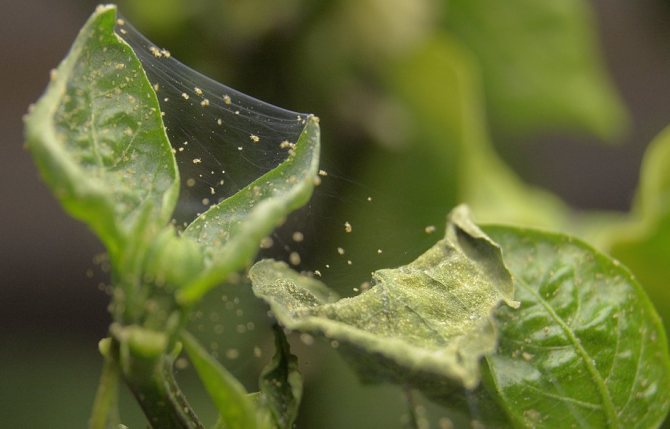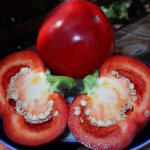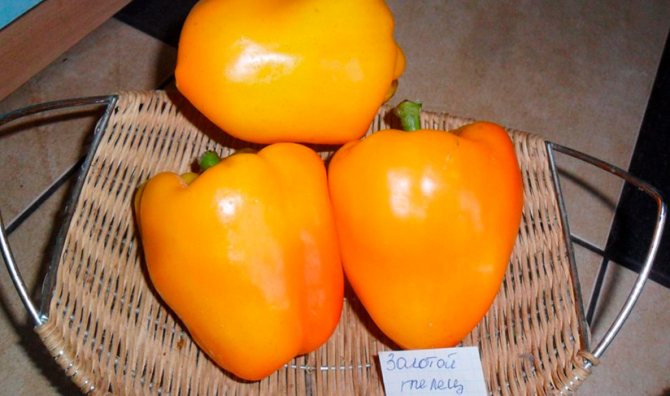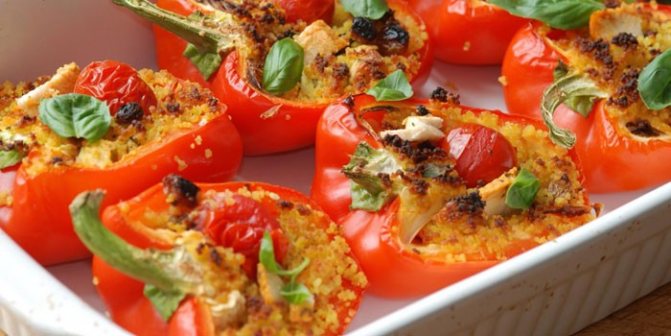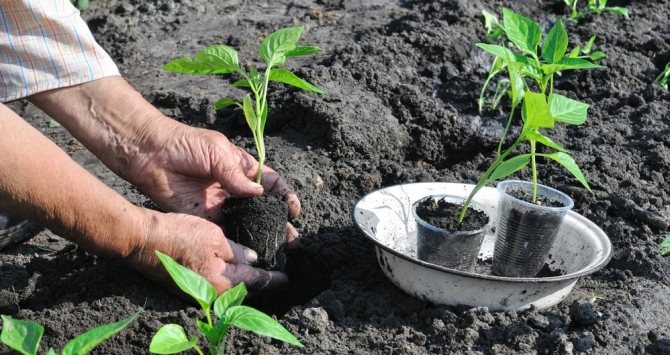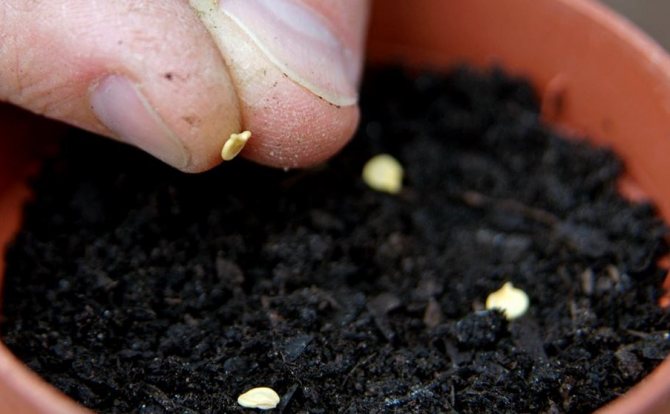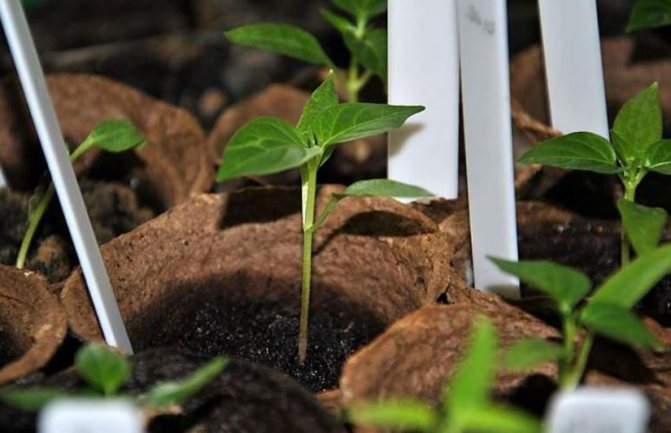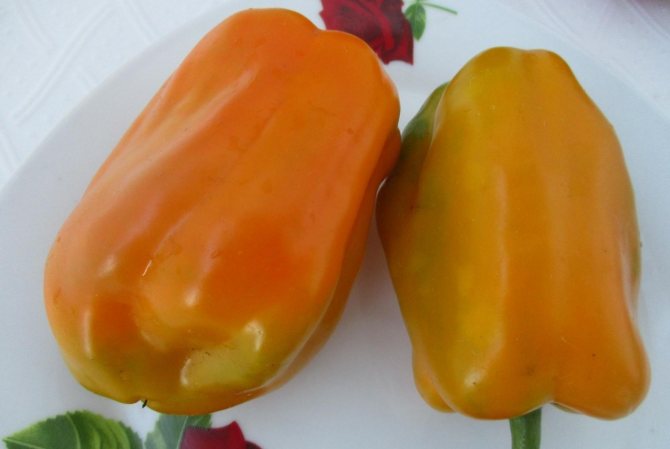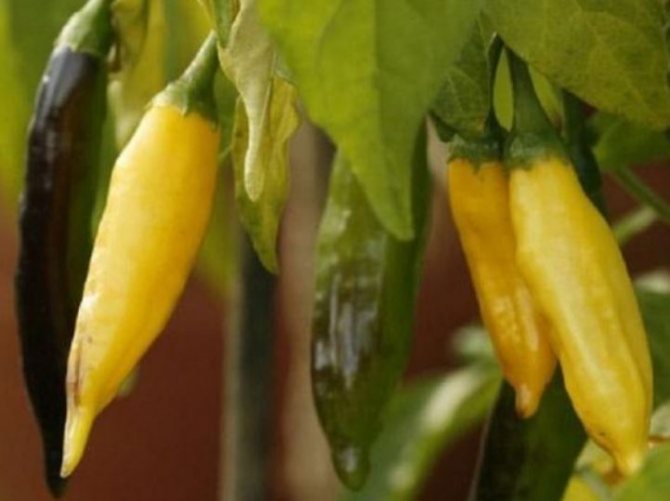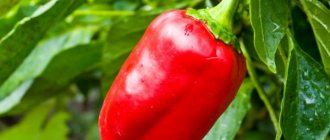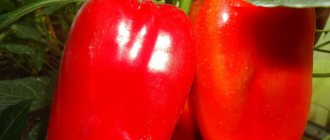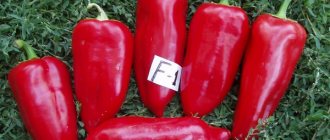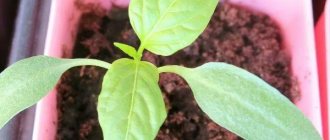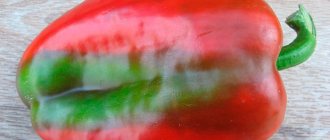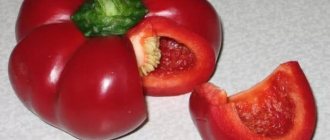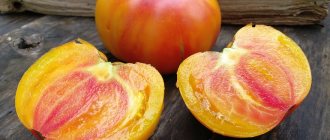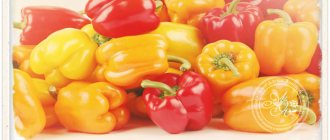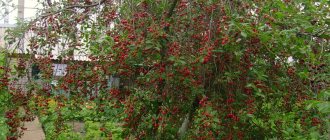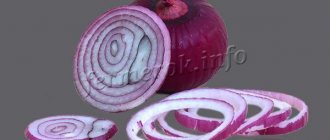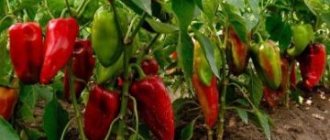| Ripening period: | early ripe (107-110 days) |
| Shape, weight of fruits: | rounded, tomato type, weighing 80-90 gr. |
| Productivity: | 2.3 - 4.8 kg per sq. m. |
| Bush type: | undersized |
| Cultivation: | open, closed ground |
Fans of vegetables of an unusual shape will certainly be interested in the Kolobok pepper. Rounded-flattened fruits belong to the gogosharny type, that is, they resemble tomatoes in shape. These "koloboks" have become very popular among fans of the nightshade culture due to their excellent rich taste, early maturity and versatility of use.
Characteristics and description of the variety
The sweet pepper variety Kolobok belongs to the early maturing. After the beginning of the growing season (emergence of seedlings), the fruits reach technical maturity at 107-110 days. The gingerbread man is intended for growing in open ground, greenhouses and under film shelters.
In the description of the variety, it is indicated that the cultivar belongs to half-stem plants with a height of 40 cm, in a greenhouse - up to 60 cm.This means that the bush is compact, densely leafy and has a sufficiently strong stem that can withstand the weight of its own fruits.
Peppers have a rounded, flattened shape with a smooth surface. At milky ripeness, the peel is colored in a salad color, which, as it ripens, changes to dark red (see photo).
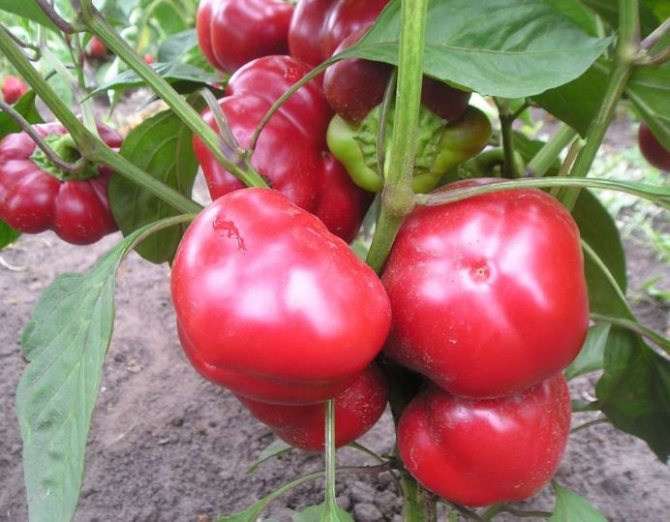
Another variety of the variety is the yellow gingerbread man. It differs from the classic in its high sugar content and golden-orange color.
Gingerbread man is a thick-walled variety: on the cut of the fruit, with the naked eye, you can see that the thickness of the pulp together with the peel is about 1 cm.On average, these indicators are 8-9 mm.
The pulp is very juicy, fleshy, sweet with a pronounced peppery aroma. Fruits are compact, weighing 90 grams, individual specimens can gain weight up to 160 grams.
Tomato peppers are consumed fresh, used for salads, whole-fruit canning and stuffed.
The nutritional value of the vegetable is the high content of ascorbic acid.
Due to its thick wall and durable skin, the Kolobok can be stored for a long time at home and tolerates long-term transportation well.
The variety was included in the State Register in 1983 with zoning in the North Caucasus region. The homeland of the cultivar is Moldova.
Testimonials
Antonina: I love to cook. Once, I decided to cook stuffed peppers, but they didn't work out and everything fell apart. It turns out that I just chose the wrong variety. Such a trifle, but it was worth the raw material thrown out by the chickens. Now I have taken into account all the mistakes and choose dishes for this, especially my favorite Topolin, Atlant, and Golden Rain. They have never failed. I can safely recommend it to all lovers of stuffed peppers.
Konstantin: I work as a chef in a restaurant. Often you have to stuff the peppers. As - no one else, I know that not all varieties are suitable for stuffing. Thick-walled are best suited for this. If the dish is immediately served on the table, use a rounded shape, if for preservation - oblong. For stuffing, I use the Golden Miracle. Our visitors really like it!
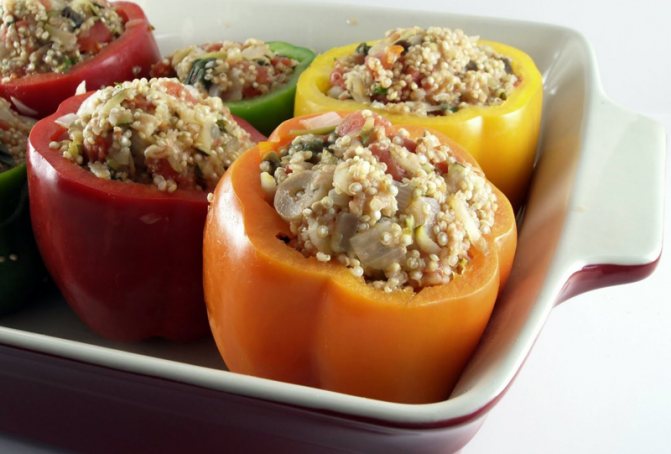

Tamara: My daughter brought me a recipe for preserving peppers with the addition of minced meat and vegetables, which we love very much. They opened it for Christmas and only consolidated their love for it. We use for this "Bogatyr" and "Red shovel". They are oblong, so it is better to put them in a jar.Try it yourself! Such peppers will surely find their lover. Even my son-in-law, who doesn't like peppers in any form, appreciated them.
Sowing dates and care features
When growing pepper Gingerbread man in the open field, the manufacturer's recommended sowing time for seedlings is March 10-20. The seedlings are transferred to the garden bed when they reach an age of 50-60 days. These dates fall on May 10-20. By this time, the temperature should be at least +15 degrees during the day and +12 degrees at night.
If the pepper is grown in a greenhouse, then sowing is carried out at the end of February - early March.
Caring for seedlings at home includes standard measures: watering every 3-4 days, loosening the soil, maintaining the temperature from +23 to +25 degrees, good lighting.
Due to the compactness of the bushes, the cultivar is suitable for thickened planting. The recommended scheme for placing plants in a permanent place is 40 by 60 cm. m. it is permissible to plant up to 5 plants.
You can grow a crop in the place where carrots, beets, cabbage, pumpkin seeds, legumes (except for beans) grew before. Cucumbers are considered unacceptable "neighbors" of pepper.
The gingerbread man, like other varieties of bell pepper, loves non-acidified airy soils filled with compost or rotted manure. He needs regular watering (every 3 days), weeding and loosening of the soil. In planting greenhouses, it is recommended to mulch with straw. Mulch will help retain moisture in the soil and keep weeds from growing.
The variety is responsive to fertilization, loves warmth and sun. The lack of ultraviolet radiation and the lack of fertilizing can affect the yield and size of the fruits. An infusion of chicken manure is used as organic fertilizers; of mineral fertilizers, nitrophoska is best suited.
Pepper care also includes removing the bottom leaves and all stepchildren before the first fork.
Fruits are recommended to be removed from plants at the stage of technical ripeness, so that they do not draw on food and do not inhibit the development of new ovaries.
Yellow pepper: varieties, features of harvesting and seeds
Usually, the harvest of peppers begins to be harvested when they are ripe and match the color indicated on the package. But just as often, the harvest is harvested not yet ripe, then it will be better stored. Unripe peppers are removed from the bush and cleaned, then tightly packed in boxes and stored in a dark place at room temperature. In this form, after a few days, the peppers ripen and get shades of various colors. But those fruits that remained to grow on the bush thanks to the spaciousness begin to grow faster and better, as well as fill up because of which they will be more juicy and sweet. And due to the fact that there are few fruits on the bush and they do not need to compete with each other, and in this case, the fruits that remain on the bush receive much more nutrients and vitamins. So if you decide to grow yellow peppers, be sure to study all the characteristics of the variety, the conditions for proper planting, watering, feeding and caring for this pepper. Then you will always be pleased with the quantity and quality of the harvest, which will be a priori rich. In general, yellow pepper is just a storehouse of vitamins and nutrients. And if you really like the variety you have grown, you can collect its seeds yourself. For this, the pepper must ripen and even overripe to such an extent that it becomes dark and wrinkled. Such a fruit must be cut and the seeds removed. They need to be dried and stored in a dark place. And the next year, before planting, they need to be poured into a glass of water and those that float to the surface just need to be thrown away, because they do not germinate. But those that remained at the bottom of the glass can be safely planted on seedlings.
Yellow pepper: varieties
Disease resistance
Bell peppers of the Kolobok variety have good resistance to diseases such as apical rot, verticillosis, and tobacco mosaic virus. Sometimes it can be affected by anthracnose. Has no immunity against fusarium.
Disease prevention includes maintaining crop rotation, regularly weeding or mulching the soil, and treating plants with fungicides.
The gingerbread man can be attacked by pests such as aphids, whiteflies, slugs and spider mites. The bushes should be regularly inspected for the presence of parasites and the plants should be treated with insecticides in a timely manner at the first signs of damage.
Video
You can also watch a video where you will be told about the healing properties of yellow, red bell pepper.
Having familiarized themselves with the descriptions and photographs of many varieties, a novice vegetable grower will be able to choose yellow bell peppers with suitable characteristics. If you follow agricultural practices, you will grow a good harvest at home.
Gold bar. Very fruitful and the most delicious! Early ripe 110 days variety with cuboid thick-walled (up to 9 mm), juicy and sweet fruits weighing 170-350 g, in consumer ripeness - green, later acquiring a golden-yellow color. Differs in long storage and universal use, as well as great taste. Originator - Agro.
Advantages and disadvantages
According to the reviews and characteristics of the Gingerbread man, the variety has several advantages:
- early return of the crop;
- friendly fruiting;
- excellent peppery fruit taste
- thick walls, beautiful shapes;
- disease resistance;
- good keeping quality and transportability
- universal purpose in cooking.
Among the shortcomings, gardeners distinguish an average yield and vulnerability to verticillary wilting.
Yellow pepper: varieties. How to choose the right variety
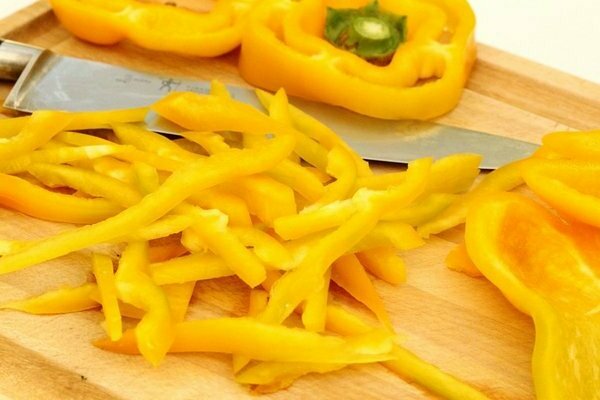

Yellow pepper: varieties. How to choose the right variety
Of all the varieties of yellow pepper varieties, initially you need to study well the characteristics of the varieties and their features. Indeed, despite the fact that red pepper is slightly tastier than yellow, gardeners prefer it due to its color, which looks beautiful both in cooking and in winter preparations. And also in yellow pepper there is a lot of phosphorus and potassium, which is simply necessary for the human body. And also it is this pepper that is great for feeding children, because it is considered dietary. Also, yellow pepper contains a lot of pectin, fiber and essential oils. And also in this pepper there is cellulose, which is simply necessary for humans. In addition, this pepper contains vitamin C and ascorbic acid, and it is known to raise human immunity well. Pepper also contains vitamins B and PP, A and E. It also contains iron, calcium and other trace elements. So yellow peppers are a treasure trove of vitamins. And also in yellow pepper there is a so-called "hormone of happiness", which is even more in it than in chocolate. And due to the fact that pepper is a dietary product, its use will not add a single gram of excess weight to you. It is yellow pepper that is included in many recipes, and it is very common in cooking. And in winter blanks it just looks very aesthetically pleasing and beautiful. And yellow pepper is stored without losing its appearance and useful properties longer than red.
Similar varieties
Pepper Kolobok, in terms of the characteristics and description of the variety, has similarities with the following cultivars:
- Bagel;
- Ruby;
- Olenka;
- Golden Tamara;
- Sun.
Bagel is an early ripe pepper that gives off fruits 105-110 days after germination. Sprawling bush up to 70 cm high. Tomato-like fruits of bright red color reach 80 to 100 grams in weight. Like Kolobok, they have a universal purpose. Ideal for stuffing. Productivity per sq. m. reaches 5.5 kg.The variety is resistant to verticillary wilt.
Ruby also refers to the gogosharny type of pepper. Unlike Kolobok, this cultivar matures later. The return of the crop occurs 160 days after the beginning of the growing season. Large thick-walled fruits ripen on the bush, the weight of one specimen reaches 150 grams. From 1 sq. m. collect 3-3.3 kg of vegetables. Pepper has medium resistance to bacterial wilting.
Olenka is an early ripening variety from the Aelita agrofirm. Included in the State Register for the Russian Federation. In terms of characteristics, it is largely identical to Kolobok. The mass of dark red fruits at biological maturity averages 90 grams, thickness is 8 mm, the number of nests is 3-4 pcs. The bush is compact, low-leafed up to 50 cm high. It has a high yield under film shelters, which, with proper agricultural technology, can be 9 kg per 1 sq. m.
Golden Tamara belongs to mid-season varieties. The crop is harvested in 135-140 days. Pepper bushes are relatively small, 45-60 cm high. Tomato-like, thick-walled fruits of golden yellow color gain weight up to 150-200 gr.
The sun has many similar characteristics to the yellow Kolobok. Gogoshar type peppers weigh on average 70-100 grams. Endowed with a thick wall, fleshy, juicy and fragrant pulp with a high content of vitamin C. The plant's bush is compact, 35 to 50 cm high. The plant gives off fruits 110-120 days after the beginning of the growing season. The variety is resistant to verticillium and Alternaria.
Yellow peppers: varieties, how to feed sweet yellow peppers
For the first time, as a top dressing, you need to add nitrogen to the pepper, 1 liter of manure, which is diluted in a bucket of warm water. The second time, potassium and phosphorus must be added as fertilizers. If the first top dressing needs to be applied two weeks after planting the seedlings, then the second top dressing must be done before flowering begins. For this top dressing, you need to dilute potassium and 2 tablespoons of superphosphate in 10 liters of warm water. The third feeding is carried out at the moment when the fruits of the pepper begin to grow actively. To do this, you need 2 tablespoons of superphosphate and a glass of pure wood ash without impurities. This mixture must be diluted in a bucket of warm water and left to infuse for two days, and only then each bush of pepper should be poured with this infusion. Also, do not forget that if your bushes are tall enough, and also fluffy, then they just need to be tied up. Otherwise, they simply will not have anything to rely on, and they can break according to their own weights, and even more so if there are a lot of fruits on the bush, it is even more susceptible to fracture. But if the bush is small, then it is not required to tie it up.
Rules for choosing a place and time of boarding
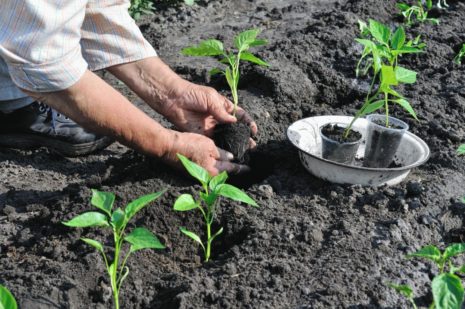

Mid-season peppers in the southern regions and the middle lane give good yields in the open field, but closer to the north it should be grown either in closed high beds or in greenhouses.
The choice of variety also matters. Most often, the packaging contains information about the recommended growing methods. There are seeds intended exclusively for open ground, there are only for the greenhouse, and there are universal seeds that can be grown with equal success both there and there.
What varieties to plant in the greenhouse?
A greenhouse is the best place to grow pepper bushes. Greenhouse conditions are able to satisfy all the whims of a tropical vegetable. The most common plants grown in greenhouses are:
- Hungarian yellow - small neat bushes with small yellow peppers. The compact size of the plant allows you to save greenhouse space.
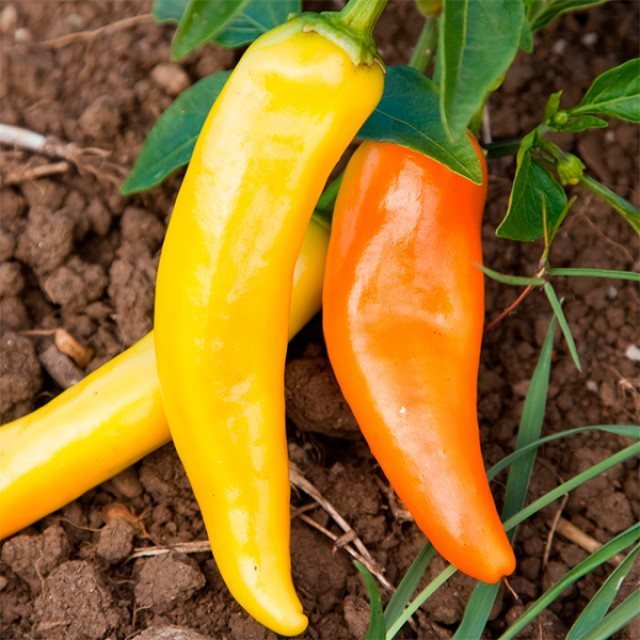

Hungarian yellow - Astrakhan 628 - mid-season and high-yielding pepper with medium cone-shaped fruits. As they ripen, the color of the peppers changes from bright green to deep red. The bushes are half-meter long, compact and neat.
- Jubilee VNIISSOK - tall, spreading plants of early fruit ripening.The peppers are dark red, moderately hot.
- Filius blue is a dwarf pepper that takes up little space in the greenhouse. The fruits are multi-colored, very pungent in taste. Peppers are used to prepare all kinds of culinary dishes and as a pepper condiment.
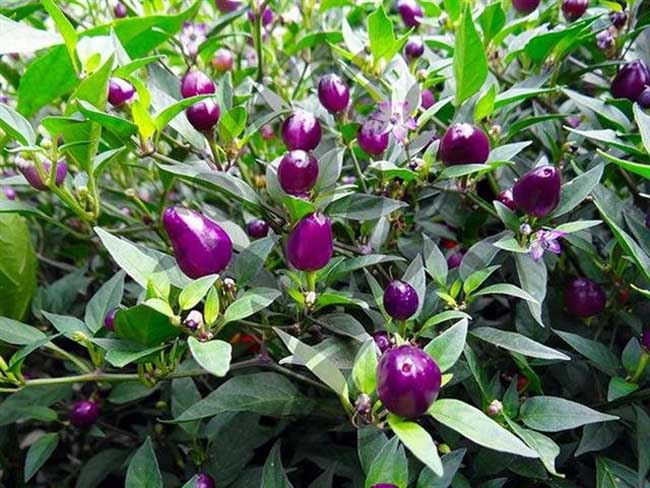

Filius blue - A small miracle - a fast growing and absolutely unpretentious variety that does not require serious maintenance. The bushes bear fruit abundantly, but with very small peppers. The fruits are distinguished by excellent taste and pleasant peppery aroma.
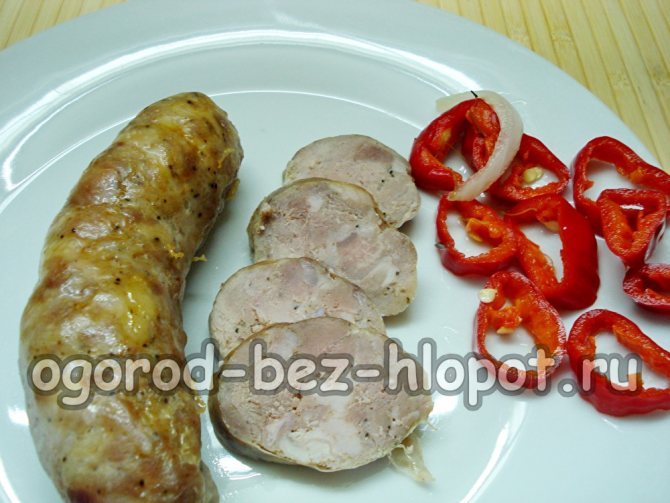

You may be interested in:
Pickled hot peppers for the winter "Lick your fingers" Save hot peppers for the winter as long as possible, without at all worsening its taste and external characteristics, but only ... Read more ...
The following plants are distinguished by an unusual shape of fruits:
- Drakosha;
- Falcon's beak;
- The Queen of Spades;
- Yellow mushroom;
- Garda Fireworks;
- Snake;
- Octopus New Year;
- Golden spool.
Lovers of very spicy varieties should pay attention to the following peppers:
- Bright dawn;
- Bella;
- Harakiri;
- Homer;
- Crocodile;
- Sonora;
- Draco;
- Khedar;
- Ancho Poblano.
Greenhouse peppers give an order of magnitude more yield and grow stronger.
Pest and disease control
Like any other crops, the Golden Calf pepper can suffer from diseases and pests, which include:
- late blight - a fungal disease that forms brown spots on the leaves of pepper, which grow throughout the plant and affect the fruits. Preventive measures are observance of crop rotation and disinfection (use means "Barrier", "Zaslon", "Oksikhom");
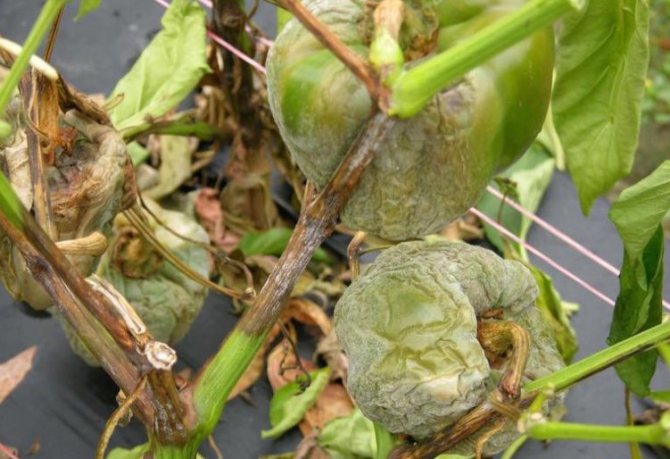

- rot - arises as a result of high air humidity, is manifested by the appearance of putrefactive spots and mold on the plant and fruit. It is necessary to destroy the affected vegetables and plant areas, in severe cases, treat with a fungicidal preparation ("Barrier", "Fitodoctor", "Trichodermin");
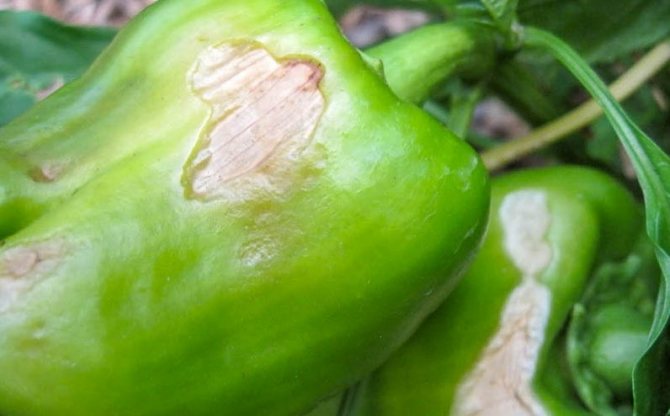

- blackleg - a disease in which, due to the high humidity of the air and soil, the root stem rots and the entire bush dies. It is necessary to deal with it by adjusting the amount of watering and temperature, dry the earth, loosen it and sprinkle it with wood ash;
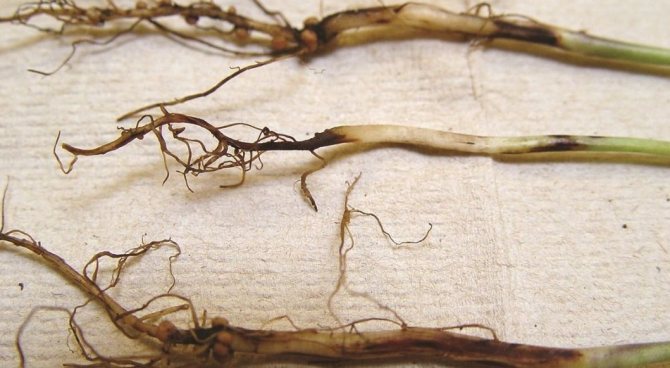

- black bacterial spot - mainly affects young plants, on which small watery spots with a yellow border first appear, then they grow and darken to black. The disease develops in a humid environment. It can be avoided by observing crop rotation, dressing seeds in a weak solution of potassium permanganate or the drug "Fitolavin-300";
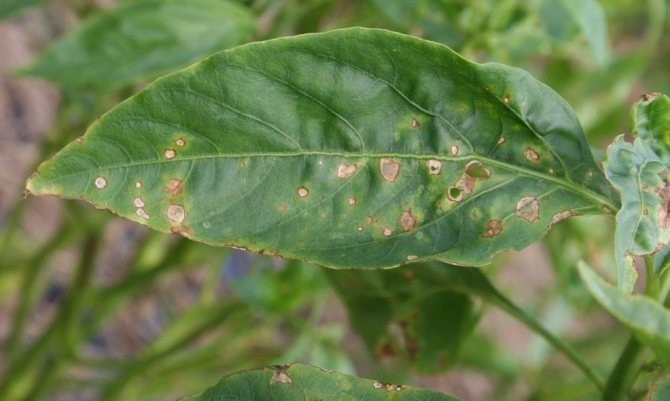

- aphid - an insect that completely damages the entire plant, sucking the juice out of it. Can be destroyed with a homemade solution of 10 liters of hot water, 1 tbsp. finely chopped tobacco or wood ash. You can also use insecticidal preparations ("Keltan", "Karbofos") at the rate of 1 tablespoon of the substance per 10 liters of water;
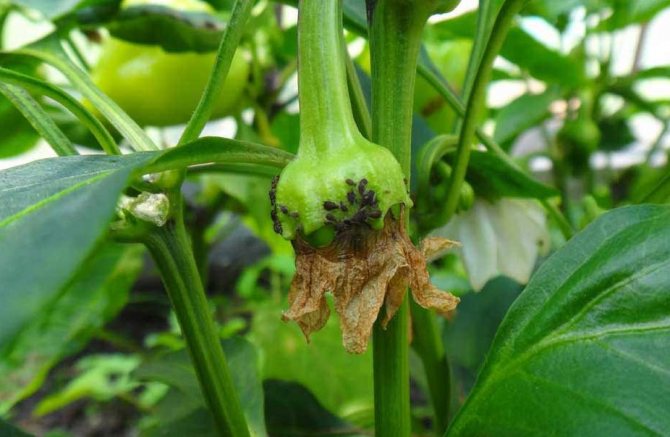

- slugs - parasites that eat the leaves and fruits of the pepper. It is necessary to cover the surface of the earth with ground hot pepper, dry mustard or treat it with special preparations ("Thunderstorm Meta", "Slime-eater");


- spider mite - sucks sap from the lower part of plant leaves. The best way to fight this parasite is to sprinkle a homemade solution of 10 liters of water, 1 cup of finely chopped onion or garlic, and 1 tablespoon of liquid soap. The tool must be insisted for several hours.
